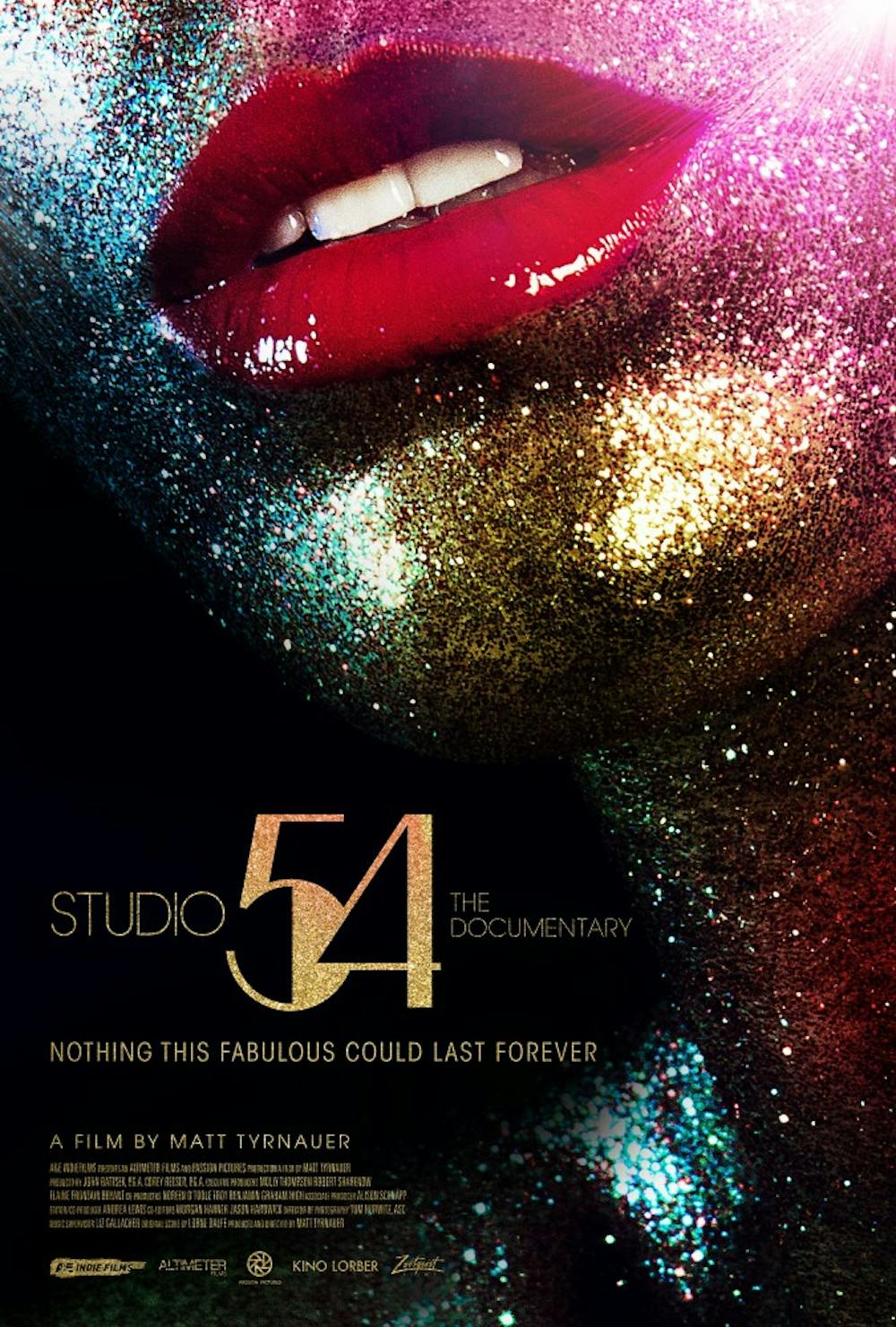Spring break is over and we are back at Penn once again. If you're still looking for some binge–worthy Netflix to further procrastinate all the work you put off, look no further—Studio 54 is the flick for you. This sultry documentary with vintage vibes adds to Netflix’s expanding repertoire of captivating nonfiction films, and makes it mark as an ode to New York’s vibrant 1970’s nightlife. From its killer disco soundtrack to outstanding collection of images depicting boatloads of celebrities—from Michael Jackson to Andy Warhol to Elton John, dancing, singing, and hanging from the ceiling (often topless)—it’ll make you nostalgic for a time period well before your living memory.
The rapid rise of Studio 54 began in 1977 when two freshly minted college graduates, Ian Schrager and Steve Rubell, partnered up with a shared vision to convert a former CBS television studio into a disco–maniac’s wet dream. I mean that in the most literal sense of the term; Studio 54 was wet, steamy, and dreamy. The one hour and thirty–eight minute movie boasts a well–curated collection of pictures and videos that transport the viewer back in time to the golden age of New York nightlife: towers of champagne, wild costumes, rampant sex, and blasting music. The audience has the chance to see Studio 54 at its peak, with shiny tinsel dotting the ceiling of the club as glitter rains down on dancers swaying to the horns and dynamic disco beats. Fashion–lovers will appreciate the wide spectrum of 1970s vogue, from off–the–shoulder sporty dresses to full–on platform heels and wild makeup. The documentary features numerous celebrity cameos, and commentators range from journalists to former promoters who laud Studio 54’s all–inclusive image—for example, its emphatic encouragement of gender and sexual fluidity, way before it was socially accepted. As inclusive as "Studio"—as its adorer's often call it—likely was, the documentary also manages to capture its exclusive nature, flashing footage of rejected clubgoers, sighing, “I guess they either like the way you look or they don’t.”
Unfortunately, everything that goes up must come down, and Schrager and Rubell were no exception. Husky–voiced Schrager narrates the entirety of the documentary as it follows the timeline of the club, from its opening night to its last, sudden hurrah. In 1978, after Rubell boasted in New York Magazine that “only the mafia does better” than the nightclub business, the duo was indicted for tax evasion and obstruction of justice—but watch for yourself to see that the legal battle is not as clear as you may anticipate. Overall, Schrager’s frank storytelling gives the audience a fresh and intimate look at his relationship with Rubell and the business, as well as his own personal take on the legendary nightclub that is so often shrouded in mystery.
Watch primarily for a good time capsule of 1970’s glitz, glam, and celebrity. Next, watch to learn something new about pop culture and New York’s history. Watch to witness Schrager’s astounding and fascinating come back post run–in with the feds. Be it privilege, talent, hard–work, or a combination of the three, he goes on to run a successful hotel chain that he and Rubell co–found shortly after serving their prison sentence. Most of all though, my most important takeaway: let’s bring disco back, guys.







